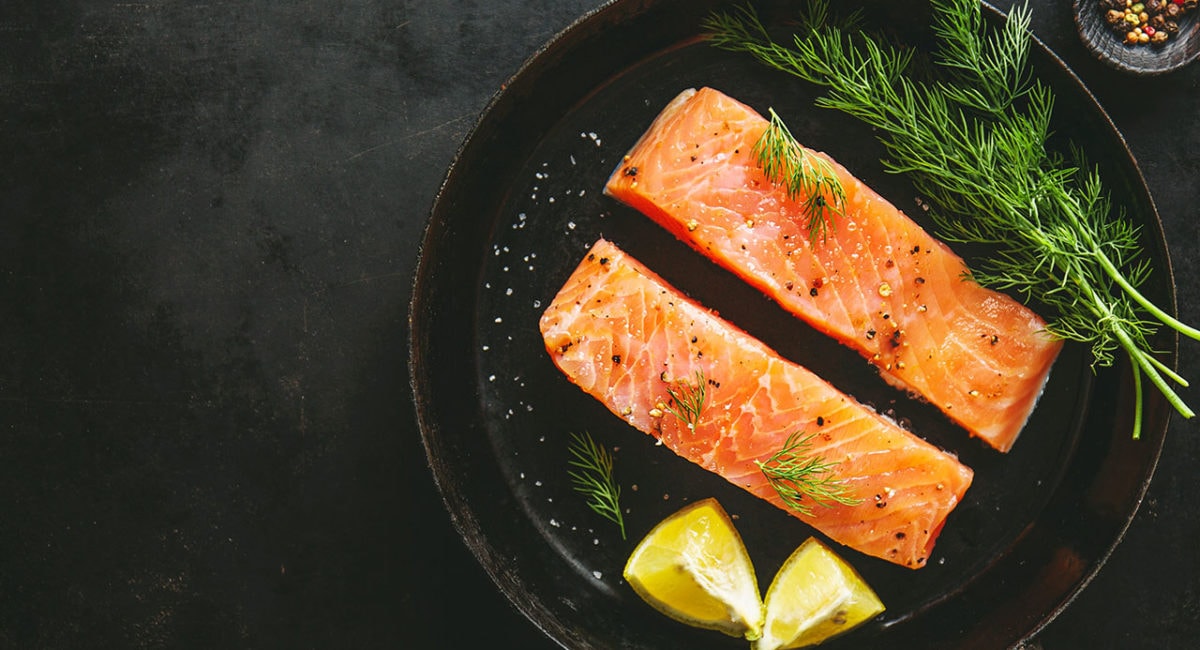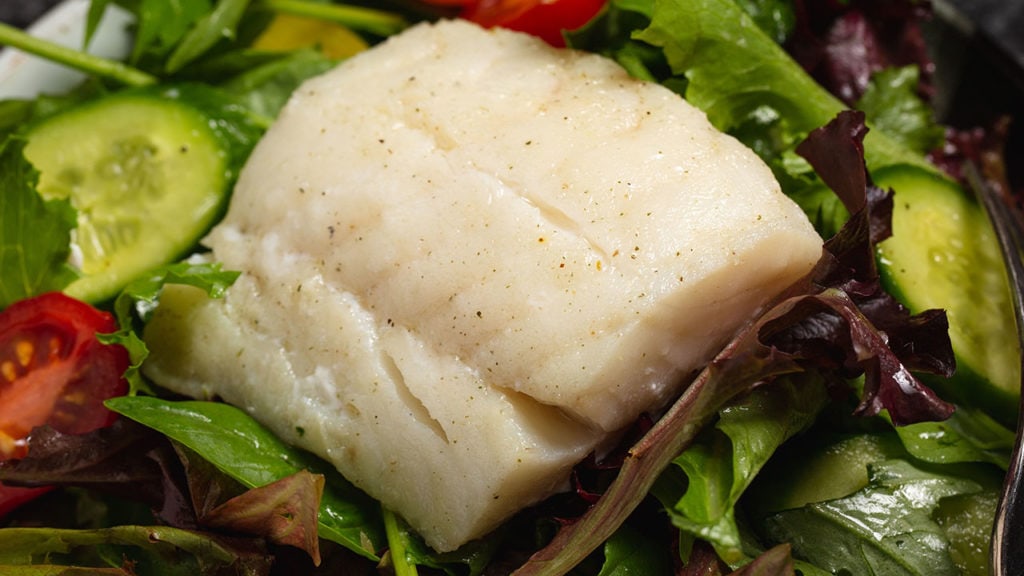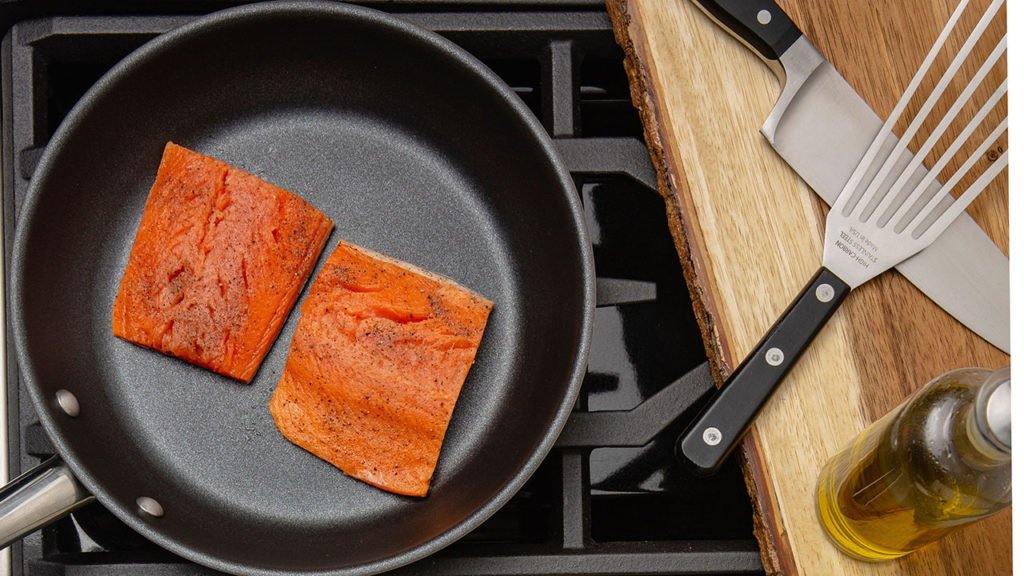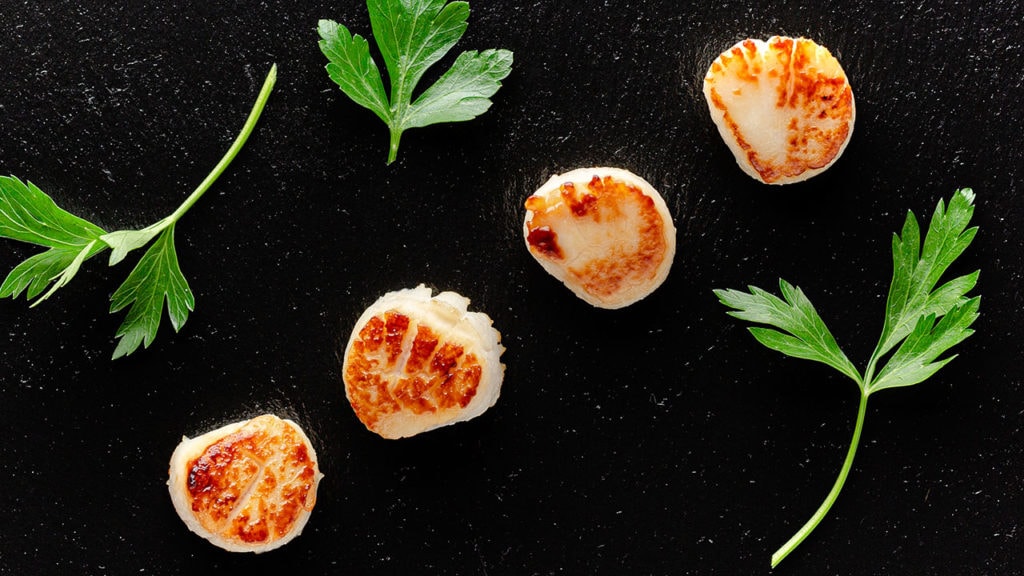The ButcherBox Guide to Cooking and Enjoying Frozen Seafood
Try the Seafood Box today to get a taste of our delicious, wild-caught salmon, lobster, scallops, and cod.
In this guide, we’ll share some tips and recipes to help you cook your frozen seafood so that you get the same quality fish and shellfish dishes you’d get at a Maine lobster shack or dockside Florida tiki bar. We’ll cover:
- Tips for cooking seafood from frozen
- Everything you need to know about thawing frozen seafood
- The best ways to cook frozen lobster
- Our guide to cooking perfect salmon and cod
- The easiest ways to cook frozen scallops
- Everything you need to know about thawing your frozen seafood
Ideally, you find yourself on a charter boat, heading back to shore with the endless horizon of the Pacific at your back and a boat full of halibut. You hit the docks with the freshest, most delicious fish in the world. And right there on the dock, the boat crew de-scale and cut your fish and hand you the most beautiful fillets that you take right home to grill up.
But for those of us who don’t have access to America’s two coastlines, some of our favorite fresh seafood dishes—lobster, salmon, cod, and scallops—have been unattainable.
Not anymore.
With ButcherBox, freshly frozen fish can be delivered directly to your door. Use this guide to learn about how to cook and use frozen seafood.
About Frozen Seafood
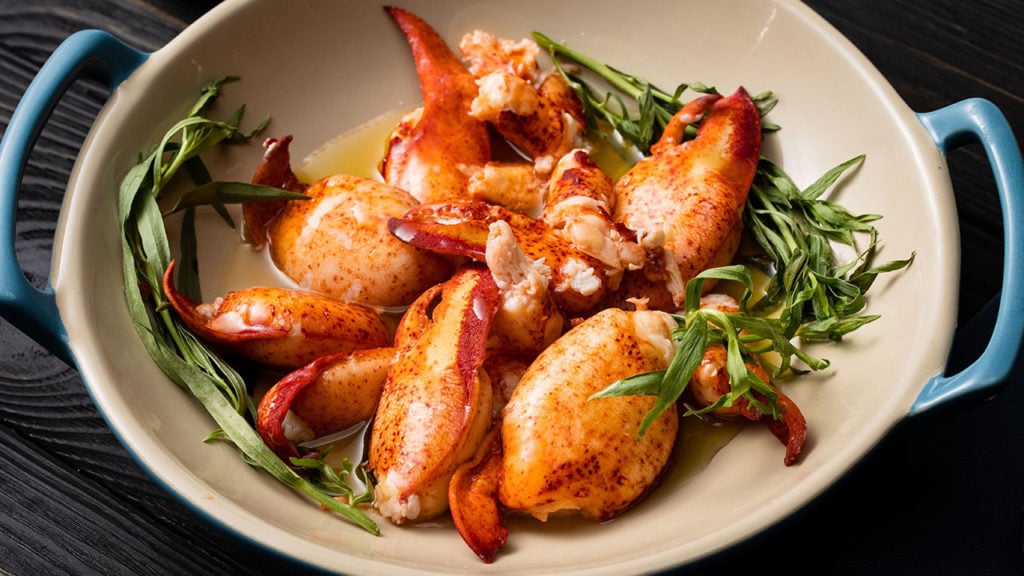
Frozen salmon, cod, lobster, and scallops are readily available all year-round, and all are perfect for whipping up delicious dinners on weeknights, grilling on the weekend, or featuring for lunch.
For many recipes, frozen seafood should be thawed before cooking. The best way to do this is in the refrigerator overnight, but, if short on time, you can also thaw seafood in water if you keep an eye on it. It is vital to remove frozen seafood from vacuum-sealed packaging when defrosting.
Seafood can also be cooked directly from frozen, but may require twice as much cooking time. No matter the method, all seafood should be cooked to 145°F according to the FDA.
While frozen lobster meat and tails can be cooked from frozen, you get better results—more tender lobster—by thawing prior to cooking.
How to Cook Frozen Seafood
Frozen seafood can be cooked in a number of ways: Baked, grilled, seared, fried, and even cooked in an air fryer.
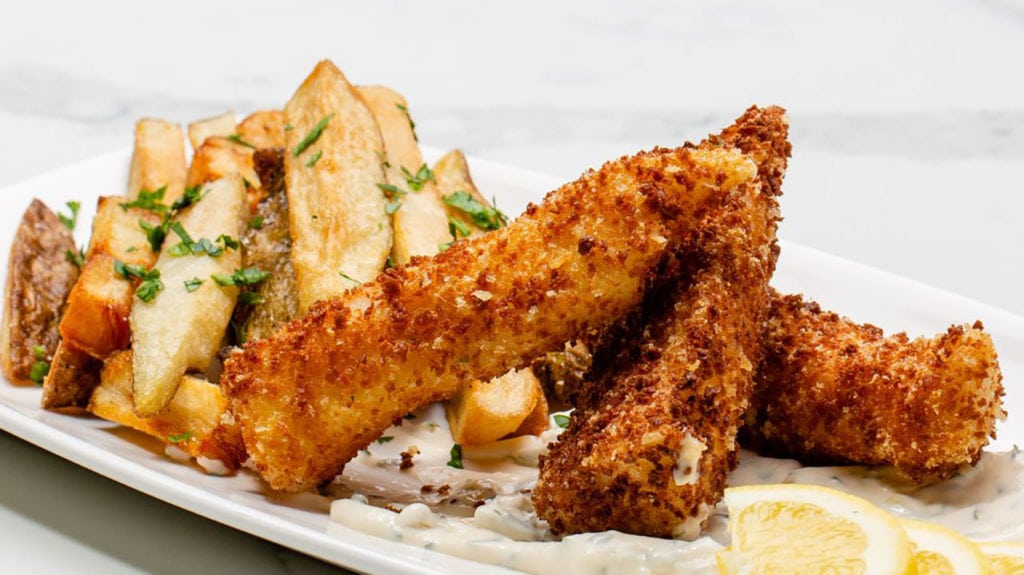
There are a few tips that can make almost any seafood dish come out amazing:
- Bake Seafood in the Oven – Cod and salmon bake up well in the oven with a brush of oil, a few spices, and maybe some touches of citrus. That’s it.
- Grilled Seafood – Scallops, salmon, and cod grill up nicely and the added smokiness from grilling gives fish, crustaceans, and bivalves some added flavor. For fish, cook with skin-side down and you’ll know it’s done when the skin peels off the grill and the fish flakes apart from the skin.
- Cook Seafood on the Stovetop – Scallops sear up nicely on the stovetop with just a bit of cooking oil or butter and some salt and pepper. Salmon and cod are also delicious when cooked in a pan, as is lobster.
- Frying and Air-Frying Seafood – Breaded or not, most seafood fries up well. The lines at the best clam shacks from Cape Cod to the Florida Keys to the Gulf Coast and the entire Pacific coast can attest to the popularity of fried seafood. But if you are looking for that fried crispiness at home, you can also try out air frying your seafood.
- Instant Pot – Most seafood doesn’t benefit at all from slow cooking (a few chowders and fish stews being the exceptions), however, some recipes that use the Instant Pot work quite well. You should give them a try if you’re looking for another way to cook fish.
Thawing Frozen Seafood
Frozen seafood in vacuum-sealed packaging needs to be removed from the package before thawing. The best way to do this is to remove the fish, crustacean, or bivalve and place it into a resealable plastic bag. This extra step is essential to avoid the growth of potentially harmful bacteria when vacuum-sealed seafood defrosts.
Thawing fish in its packaging, even in a refrigerator, creates a low oxygen environment where potentially dangerous bacteria, such as Clostridium botulinum or Listeria monocytogenes, grow.
Placing fish in another bag to defrost exposes it to oxygen, reducing opportunities for the bacteria to grow.
How To Cook Different Types of Frozen Seafood
What’s the Best Way to Cook Frozen Lobster and Other Crustaceans?
You can cook frozen salmon a number of ways, but the easiest technique that results in mouth-watering lobster is to butter-poach it on a stovetop.
Lobster should be thawed before cooking from frozen (it doesn’t have to be but the end product ends up being a bit tough if you cook directly from the freezer). Also, after defrosting, it’s good to pat the lobster with paper towels to remove excess water.
When poaching lobster knuckles and claws in butter, cook until the meat is opaque or white. Then you can use the butter and whatever seasoning you added as a flavorful drizzle. This method is a perfect start to many different lobster dishes including Connecticut-style lobster rolls.
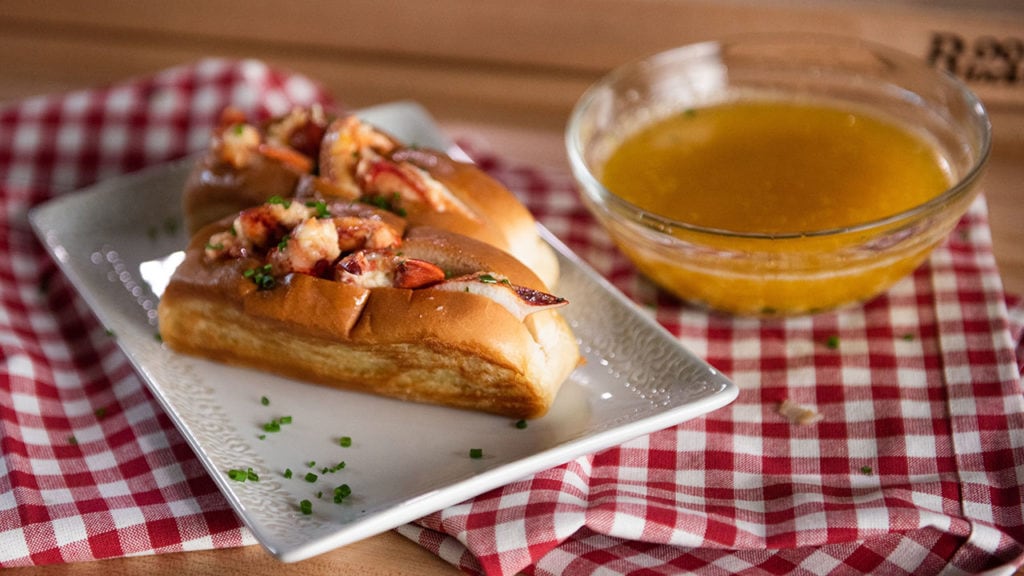
Ways to Cook Frozen Salmon, Frozen Cod, and Other Frozen Fish
While fish is a bit more flexible in terms of the best techniques for cooking, baking halibut, salmon, cod, and other fish in the oven is both quick and easy.
If thawed, salmon or cod will take about 15 minutes in a 350°F preheated oven. With frozen fish (depending on size), it will take closer to 30 minutes to cook to perfection.
Place the fish you are baking on a parchment-lined sheet pan, drizzle with cooking oil, and then sprinkle with salt, pepper, and any other favorite spices. Finish with a squeeze of lime and you have amazing baked cod, salmon, or halibut.
Cooking Frozen Sea Scallops and Other Bivalves
Scallops can be cooked in a number of ways. As Chef Yankel demonstrates in the video below, it is relatively easy to sear scallops.
However, you can also sear scallops and then sauté them in a coconut cream sauce for an equally crowd-pleasing dish.
Our Favorite Recipes for Cooking Frozen Seafood
- Seared Salmon and Pineapple Salsa – The perfect way to celebrate seafood on a summer evening.
- Easy Buttery Lobster Roll – A New England favorite!
- Seared-Scallops with a Bacon Lemon Sauce – What’s better than sea scallops? Scallops sprinkled with bacon, of course.
- Lobster Tail Pasta – Seafood is delicious when combined with pasta. For one of our favorites, check out this lobster tail pasta recipe.
- Cod Sticks – This recipe breaks down a quintessential fried seafood dish and also includes tips on making homemade tartar sauce to accompany the cod sticks.
- Classic Homemade Salmon Burgers – Not only do we guide you on how to make some DIY salmon burgers, but we have a guide to the most delicious toppings to cover your burgers as well.
Try the Seafood Box today to get a taste of our delicious, wild-caught salmon, lobster, scallops, and cod.
Frozen Seafood Guide
Table of Contents
Home – How To Cook Frozen Seafood

